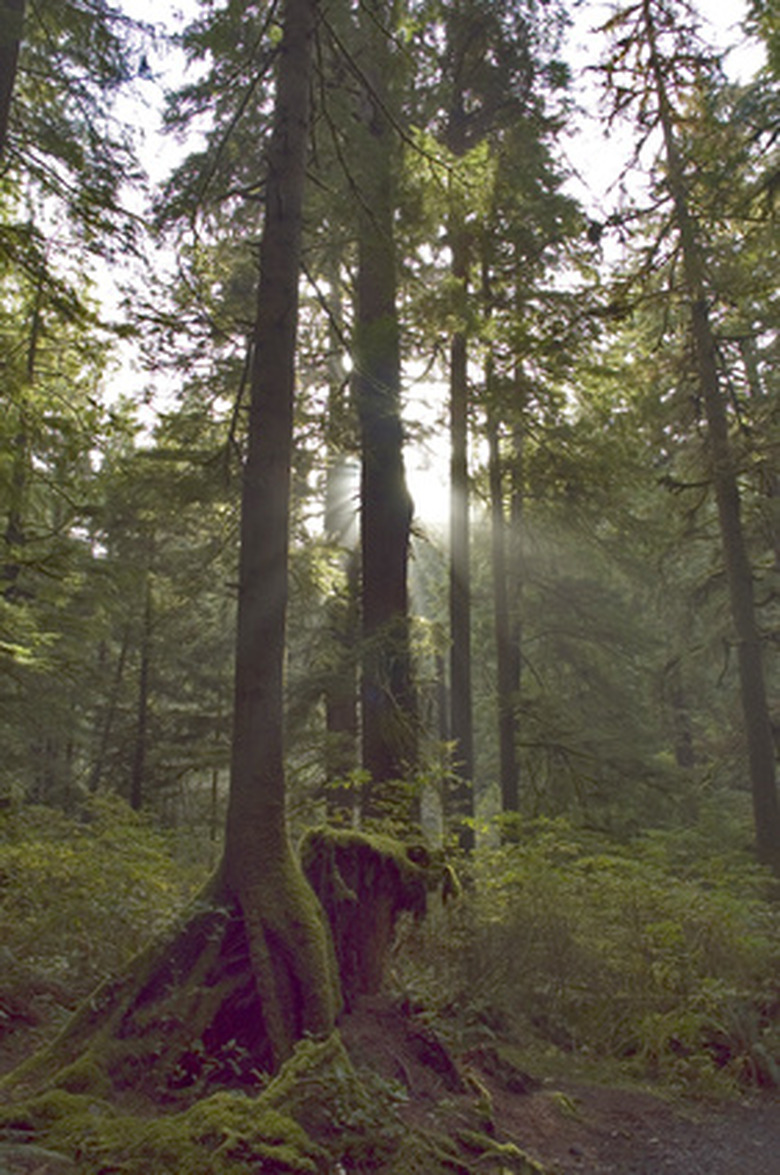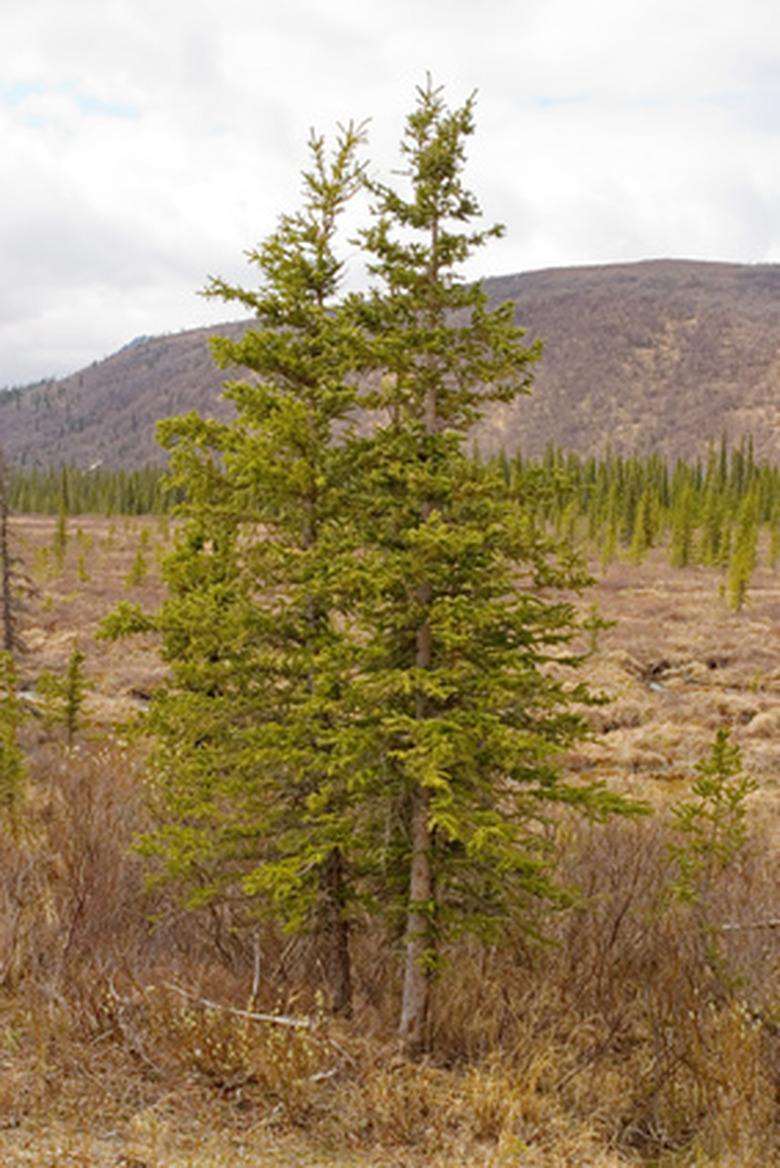Varieties Of Cedar Trees
Cedar (Cedrus) trees are a genus of evergreen conifer. The cedar is a hardy, long-lived tree that is found in most climate zones. The needles of the cedar tree are well-known for their strong, spicy scent. Left unattended, the cedar may reach heights between 100 and 200 feet. Due to their large stature, most varieties of the cedar are best used in parks, on large estates and in homes with a sizable back yard.
Atlas Cedar
The large, and often imposing atlas cedar (Cedrus atlantica) is native to the Atlas mountains of Morocco and Algeria. The atlas cedar is an evergreen conifer that can reach heights over 120 feet and has a spread that can reach 100 feet. U.S. atlas cedar trees tend to be smaller, growing to 40 to 60 feet tall and 20 to 40 feet wide. Atlas cedar's have stiff blue-green needle-like leaves that are nearly an inch long; they produce an egg-shaped cone about 3 inches long. Cones start out green but turn brown as they mature. The bark of an atlas cedar is deeply fissured and is gray to silver-gray in color. The atlas thrives in full sun to partially shaded areas, grows well in sandy to clay-like soils, and grows quickly during the first 10 to 20 years of life. Mature trees are highly tolerant of dry, humid, hot conditions and are a good choice for southern parts of the U.S. The Atlas is a long-lived cedar and requires abundant room to grow–such as parks, groves and open fields.
- Cedar (Cedrus) trees are a genus of evergreen conifer.
- Mature trees are highly tolerant of dry, humid, hot conditions and are a good choice for southern parts of the U.S.
- The Atlas is a long-lived cedar and requires abundant room to grow–such as parks, groves and open fields.
Cedar of Lebanon
The evergreen conifer cedar of Lebanon is a native of Lebanon and is also found in Turkey and Syria. Reaching heights well over 100 feet, the cedar of Lebanon has a spread that equals its height. Cultivated specimens are usually smaller, reaching heights between 50 to 70 feet. Leaves are almost an inch in length and are stiff, four-angled and set in a dense cluster of short shoots. Cones are 3 to 5 inches long and barrel-shaped. The bark of the cedar Lebanon has deep furrows and is dark gray to black in color. Plant cedar of Lebanon trees in acidic sandy loam soil that is well-drained. Younger trees can survive in partial shade but as they mature they need full sun to thrive. Cedar of Lebanon trees are slow-growing and require little water to flourish. The cedar of Lebanon is best used in parks, estates and in large backyards.
- The evergreen conifer cedar of Lebanon is a native of Lebanon and is also found in Turkey and Syria.
- Plant cedar of Lebanon trees in acidic sandy loam soil that is well-drained.
Incense Cedar
The incense cedar (Calocedrus decurrens) is native to the Cascade mountains in Oregon and is also found in the Sierra Nevada and the Baja mountains of California. They are often grown on slopes far above sea level along with other firs and pines. The incense cedar is a tall, thin evergreen that can reach heights of 150 feet; cultivated trees range from 30 to 50 feet in height. Bark is light red-brown and scaly and has deep furrows. Foliage is aromatic; leaves are about 1/4 inch long. The cone of the incense cedar is small and indistinct. Incense cedar trees require full sun and will thrive in well-drained, sandy loams that are slightly acidic. The incense cedar is a slow-grower and can live for over 1,000 years. The tree requires a lot of moisture to achieve its full potential, but will still flourish and appear attractive if water supply is insufficient. The incense cedar can be used in landscapes, as edging to a long driveway and as windscreens.
- The incense cedar (Calocedrus decurrens) is native to the Cascade mountains in Oregon and is also found in the Sierra Nevada and the Baja mountains of California.
- The incense cedar is a slow-grower and can live for over 1,000 years.

